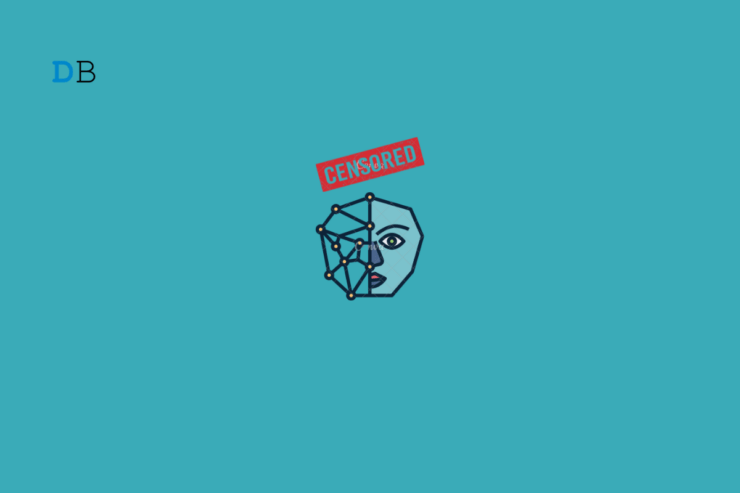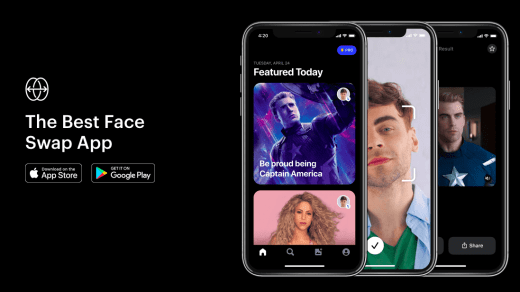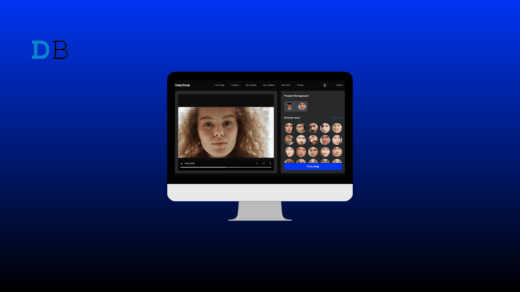Deepfake videos are a connection of terms – ‘deep’ sourced from ‘deep learning‘ and ‘fake’, which unmistakably originates from ‘fake‘.
Deep learning is a sophisticated technique within Artificial Intelligence (AI) that employs multiple tiers of machine learning algorithms to extrapolate higher-level attributes from raw input data progressively.
This methodology is capable of absorbing knowledge from disorganized information, like the nuances of a human countenance. To illustrate, an AI can gather information concerning your physical gestures.

Subsequently, this data can undergo processing to construct a Deepfake video using a Generative Adversarial Network (GAN).
This represents another form of specialized machine learning mechanism. This involves two neural networks engaging in a competition to master the attributes of a designated training dataset (for instance, photographs of faces) and subsequently fabricate novel data imbued with the same traits (novel ‘photographs’).
Due to the persistent assessment of its generated images against the training dataset, the counterfeit visuals steadily enhance in their authenticity. This underscores the escalating threat posed by Deepfake technology.
Furthermore, GANs have the ability to falsify other forms of information beyond images and videos.
Notably, the identical machine learning and synthesis methodologies employed in Deepfake creation can be harnessed to fabricate simulated voices.
What is DeepNude?
DeepNude is/was an online platform designed to undress individuals based on the photos you uploaded digitally. It harnessed artificial intelligence to speculate on a person’s unclothed appearance.
Despite generating fairly convincing outcomes, it was important to note that these depictions did not accurately represent the actual physical form of the person.
Nonetheless, significant apprehensions arose regarding the potential misuse and negative implications associated with the application.
Is DeepNude Dangerous?
Yes. Initially, DeepNude elicited discomfort due to its exclusive focus on images of women.
However, the more significant concern revolved around the potential exploitation by malicious individuals to swiftly produce revengeful explicit content, thereby infringing upon a woman’s privacy and autonomy by utilizing the application without her consent.
Why Did DeepNude Get Banned?
In response to a strong negative reaction, the developer of DeepNude opted to withdraw the application in 2019. But there are many DeepFake online portals that provide the DeepNude services that are under government scrutiny for their potentially harmful technology use.
What is a Deepfake Video?
Deepfake videos are linked to a form of artificial intelligence known as deep learning. This process entails an AI system accumulating data to enhance its proficiency. Within the context of Deepfake applications, AI algorithms amass information concerning facial gestures and configuration as observed in video content.
After the AI system comprehends the expected appearance of a face while articulating specific utterances, it becomes capable of producing fabricated videos.
Effective algorithms overlay desired facial motions (aligned with intended phrases/expressions) onto existing body movements.
The outcome is the manipulation of visual content to depict individuals conveying desired statements.
Are Deepfake Videos Dangerous?
Yes, they are. Most individuals employ this technology solely for comedic purposes. The act of overlaying the likeness of celebrities or beloved characters with amusing dialogues can lead to the creation of entertaining viral content. However, not all viral content emerges from innocent motives.
Although not every Deepfake video carries ill intent, the underlying tools possess the potential to instigate genuine issues.
Deepfake videos extend beyond merely posing challenges for public figures or famous personalities. Essentially, all it takes is a photograph or video clip along with potentially damaging audio, and the
Deepfake software will handle the rest. You might have observed the ability to generate such light-hearted videos through applications or filters.
In theory, anyone could craft such videos featuring your likeness. The essential ingredients are a photograph of you and a dose of creativity.
Given the extensive presence of individuals on social media platforms, procuring a couple of images of someone you know might be a simple task.
Consider the scenario where someone harbors malicious intentions and aims to manipulate your image into contentious scenarios.
Such tools have the capacity to undermine your professional, academic, or personal relationships, contingent on the intent of the user.
How to Remove Explicit Deepfake Photos from the Internet?
If someone edits your photo with AI or Photoshop to create a nude, then you use online help portals and submit the original photo and the edited photo, and they will remove the edited photo and all its digital footprints from all the places on the Internet. Your identity will remain anonymous. If someone has made your picture public, immediately inform the cyber security team, and file a case to initiate immediate action.
- https://takeitdown.ncmec.org/ (Funded by Meta Inc.)
- https://stopncii.org/
- Google Removal
How to Protect Yourself from Deepfake Attacks?
It’s so unfortunate that establishing foolproof measures to deter Deepfake attacks remains a challenge. The operational requisites for Deepfake software are notably minimal.
Legislative efforts have commenced to address the perils posed by Deepfake videos. An illustrative case is evident in California, where two bills were enacted last year to proscribe specific aspects of Deepfake manipulation.
AB-602 criminalized the non-consensual use of synthesized human images for generating pornography involving depicted individuals.
Likewise, AB-730 prohibited the alteration of images portraying political candidates within a 60-day period leading up to an election.
However, one might question whether these measures are sufficiently comprehensive. Encouragingly, cybersecurity firms are incessantly developing more sophisticated detection algorithms.
These algorithms scrutinize video frames and identify minute alterations introduced during falsification.
For instance, prevailing Deepfake synthesizers construct a 2D facial representation, subsequently distorting it to align with the video’s 3D perspective.
Observing indicators such as the orientation of the nose serves as a pivotal clue for detecting such manipulation.
Deepfake videos currently remain in a phase where you, as an observer, have the capacity to identify indicators on your own. Be vigilant for the ensuing traits in a Deepfake video:
- Uneven motion
- Peculiar or absent eye movements
- Inaccurate lip synchronization with speech
- Variations in lighting between successive frames
- Changes in complexion
- Digital anomalies present in the visual content
Embracing a few straightforward recommendations can diminish the likelihood of falling prey to a Deepfake manipulation.
1. Minimize the Number of Your Posts
Whenever you post content on the internet, it effectively becomes a permanent presence. Even if you employ measures like blocking users or erasing posts, fragments of data persist. Exercising caution by restraining the extent of your social media sharing is a prudent approach.
Although it’s natural to desire to update everyone about your activities, divulging an excessive array of photos online exposes you to potential cyber threats.
While it’s not expected that you maintain an entirely photo-free online presence in today’s era, adopting a mindful strategy of moderation when it comes to posting is a judicious decision.
2. Use Advanced Art Anti-Fake Technology
Certain emerging technologies are currently aiding video creators in verifying the authenticity of their video content. To achieve this, a cryptographic algorithm can be implemented to embed hashes at predetermined intervals throughout the video.
Any alteration to the video would consequently result in a change in these hashes. The combined utilization of AI and blockchain can establish an immutable digital signature for videos.
This process bears similarity to watermarking documents, albeit with the complexity arising from the need for hashes to endure even after video compression to accommodate various codecs.
Another approach to curb Deepfake activities involves employing a specialized program that introduces purpose-built digital “artifacts” into videos.
These artifacts are strategically designed to obscure the pixel patterns that facial recognition software relies upon.
Consequently, this interferes with Deepfake algorithms, causing a decrease in the quality of the fabricated content. This degradation in quality significantly diminishes the likelihood of a successful Deepfake manipulation.
3. Keep Your Accounts Private
In case you choose to maintain your presence on social media platforms, contemplate constraining the extent of your posts’ visibility.
While not infallible in safeguarding your images, the astute choice of privatizing your profile aids in confining access to your visuals within a circle of familiar acquaintances.
It is judicious to abstain from extending connections or engaging with unfamiliar individuals. This practice adheres to a fundamental guideline, as you’d want to avert the risk of being ensnared in deceitful catfishing or phishing schemes.
4. Be Careful About Who You Trust Online
Bear in mind that, like individuals appropriating photos and creating counterfeit profiles on the internet, the advent of Deepfake applications enables malevolent actors to escalate their deceptions. It is a great idea to exercise discernment prior to placing trust in any online content.
This counsel extends to encompass narratives, images, and videos. Employing digital resources can equip you with the skills to identify fabricated information effectively.
5. Use Reputable Security Techniques for the Extra Protection
However, safeguarding against Deepfake videos isn’t solely reliant on technology. Effective foundational security practices prove remarkably adept at countering the threats posed by Deepfake manipulations.
For instance, embedding automated verifications within any disbursement process would have prevented numerous instances of Deepfake-related fraud and similar scams. You can also:
- Acquire knowledge and impart awareness on how to identify telltale signs of a DeepFake creation.
- Cultivate media literacy and prioritize reliance on credible and reputable news sources.
- Embrace fundamental protocols of “trust but verify.” While cultivating skepticism towards voicemails and videos cannot guarantee absolute immunity from deception, it can serve as a valuable tool in steering clear of many pitfalls.
- Educate both your workforce and family members about the mechanics of Deepfake technology and the potential risks it entails.
Furthermore, consider that in the event Deepfake tactics are employed by hackers seeking to infiltrate home and business networks, adhering to fundamental cyber-security best practices becomes paramount in minimizing risks:
- Implement a robust security suite like Kaspersky’s Total Security to shield your home network, laptop, and smartphone against cyber threats. This comprehensive package encompasses antivirus software, a VPN to fortify your Wi-Fi connections against hacking, and safeguards for your webcams, among other features.
- Maintain regular backups of your data to safeguard against ransomware attacks and facilitate data recovery.
- Utilize distinct and robust passwords for various accounts to ensure that a breach in one network or service does not compromise others. Preventing unauthorized access to one account, such as Facebook, should not grant entry to other critical accounts.
Where’s Deepfake Headed to in the Future?
Deepfake technology is in a constant state of progression. Just a couple of years ago, it was notably effortless to discern Deepfake videos due to their inelegant motion patterns and the conspicuous absence of blinking in the manipulated subjects.
Nonetheless, the most recent iteration of fabricated videos has undergone refinement and adjustment.
The current count of existing Deepfake videos surpasses 15,000, encompassing a spectrum from light-hearted amusement to deliberate attempts at influencing your viewpoints.
With the expedited pace at which new Deepfake creations can now be generated, often within a mere day or two, the tally of such content could surge significantly in a short span of time.
Final Words
In this age of digital deception, it’s important to learn the defenses against DeepNude and DeepFake.
You need to learn how to identify signs of manipulated content, especially using these two platforms.
With the proper defenses, you will overcome every threat that will come your way concerning DeepNude and DeepFake.
If you've any thoughts on Deepfake Threat: How to Protect Yourself from DeepNude?, then feel free to drop in below comment box. Also, please subscribe to our DigitBin YouTube channel for videos tutorials. Cheers!








